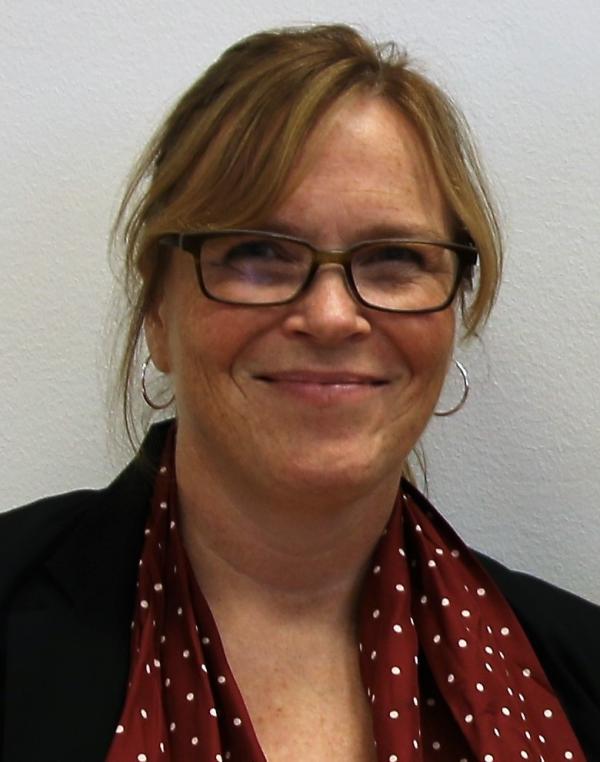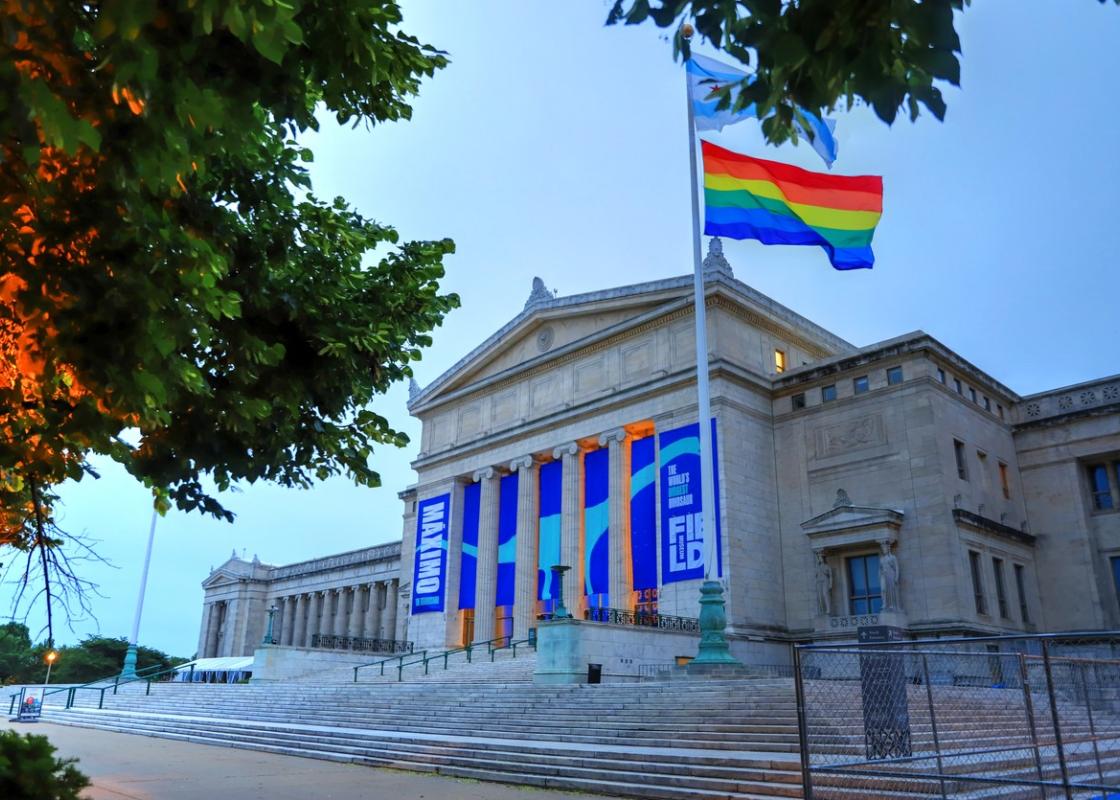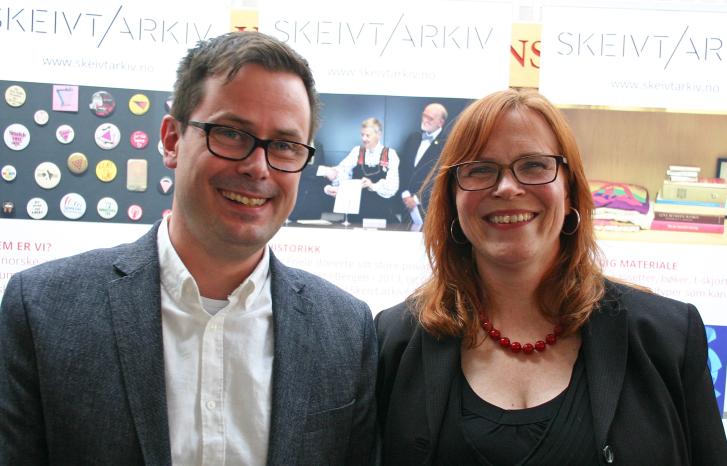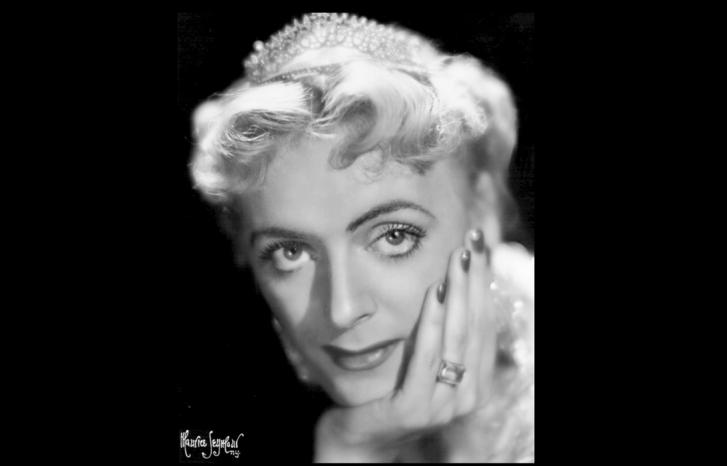“Drawing limits between male and female and between ‘normal’ and ‘abnormal’ sexuality has been essential to our culture. Everyone has had to relate to and negotiate these boundaries,” says Tone Hellesund, Professor of Cultural Studies at University of Bergen.
Hellesund partook in the establishment of Skeivt arkiv (‘Queer Archive’), which preserves and disseminates LGBT history. She was also one of the initiators behind the seminar Queering the museums – Making diversity visible, at University of Bergen last autumn. She emphasises the value of museums exhibiting queer history, also in Norway.
“Disseminating knowledge about how limits are drawn for what is acceptable sexuality and how these limits are negotiated and exceeded through history, is essential for our understanding of the past. But it is also important in order to understand the present,” she says.
How to disseminate queer history?
“We lack solid evidence of queer history,” said Matt Cook, Professor of History at Birkbeck University of London and one of the featured speakers at the seminar.
He has written about homosexual culture in London in the nineteenth and twentieth century and about queer home life in twentieth century London.
Queer lives and experiences have also been a part of local history, of maritime history, of art history and of Sámi history.
“When exhibiting queer history in the museum, it is largely based on anecdotes, approximations and assumptions rather than traditional history,” he said.
This is partly because people in same-sex love relationships were forced to keep them secret, since it was against the law.
In 2017, England marked the 50-year anniversary since homosexuality was partly decriminalised. In relation to this event, Cook wrote an LGBTQ guide for the British cultural heritage association National Trust.
It threw light on stories about men and women who have challenged conventional ideas about gender and sexuality, and demonstrated how this has shaped their surroundings.
Among the best-known people that the celebration in Britain drew attention to was the writer Virginia Woolf. She was happily married to Leonard Woolf, but she also had an extramarital love relationship with another female writer, Vita Sackville-West. She supposedly inspired Woolf to write Orlando, which revolves around a person who is born a man and dies as a woman three centuries later.
Still narrow
Tone Hellesund emphasises that the museums recognise their visitors in a positive way by exhibiting queer history.
“To most people, their sense of belonging in society is constantly confirmed. It is therefore particularly important that visitors to the museums who are not recognised as part of the majority get confirmations that they, too, have a history,” she says.

“Queer lives and experiences have also been a part of local history, of maritime history, of art history and of Sámi history. Imagine how fantastic it would be if all school children visiting the museums could see examples of this!”
According to Hellesund, the main reason why queer history has been so neglected in museums is that including such a history was unthinkable prior to 1972, when sex between men was first decriminalised.
“But even long after 1972, gay sex was regarded as such a controversial, shameful and sensitive topic that it was not considered relevant for the museums,” she says.
“It still seems that many, for instance within my own field, academia, consider ‘gay stuff’ to be marginal and not of any interest to the majority.”
According to her, this is fortunately about to change.
“Particularly abroad we see that many of the major museums in recent years have updated their collections, exhibitions and guides to also include queer topics.”
Big potential
According to Hellesund, most museums have potential to say something about queer history.
“Queer approaches to occupational history could be one interesting way to go. For instance, were all Norwegian industrial workers heterosexual? And how were feminine men and homosexuals treated at the factory or in small industrial places?” she asks.
Hellesund also points to medical history, psychiatric history, police history and criminal history as obvious approaches both for specific museums and for more general cultural history museums.
We who work in the museums have a responsibility to display a diversity of voices and opinions.
“We find so many traces from everyday queer history in diaries, letters, folk tales, church registers and oral interviews,” she says.
“I would particularly like to see the local village museums look up and exhibit stories that might tell us something about the diversity in their own local community.”
“I also have a dream to see the maritime museums display homosexual love between sailors and within the maritime culture. It is well known that people were more accepting of such phenomena at sea. For instance, the boats to America were known to have many self-identified homosexuals among the crew.”
Stories from the Queer Archive
She is referring to Queer Archive’s Skeivopedia (‘Queeropedia’), in which there are already several interesting stories that may be either studied or used in museum exhibitions.
“Such as the story about the maidservant from Kvam who was the first Norwegian diagnosed as homosexual,” Hellesund enthusiastically explains.
The maidservant from Kvam was sent to an asylum in Bergen because she seduced the other women with whom she worked. A number of remedies were used in attempts to cure her, but she is supposed to have uttered that she ‘would rather die than be without women’.
“Another example is the trial against Simonette Vold and her two maidservants with whom she had been sexually involved in the early 1800s,” says Hellesund.
The local community had known about Simonette Vold’s inclinations through generations and had seemingly ignored it.
“What may this example tell us about how local communities in practice handled cases that were legally supposed to be punished with a death sentence?” Hellesund asks.
There are stories about queer lives and society’s handling of them from most local communities. There are also a good deal of stories about gender transgression, such as the case concerning the marriage between Anne Kristine Mortensdotter and Jens Andersson.
“They married in 1781 in Strømsø church near Drammen, but some time after the wedding, the bride told the minister in confidence that she believed Jens to be a woman,” says Hellesund.
“As it turned out, Jens Andersson was born in Gran as Marie Andersdotter, but as he arrived in Strømsø in 1778, he presented himself as a man.”
Jens was examined, imprisoned and interrogated. When questioned whether he was a man or a woman, he replied that ‘he believes he could belong to both genders’.
These stories say something about the cultural understandings of both gender and sexuality in their time, and about the various ways in which the local communities might choose to react if someone crossed the line.
Sensitive topics
Kathrin Pabst is an ethnologist and Head of the department for research, collection management and education at the Vest-Agder museums. She has written a PhD thesis about the moral challenges that museum staff may face in the work with sensitive topics in the museums.
According to Pabst, the social responsibility of Norwegian museums has changed over the past ten to fifteen years.
“We who work in the museums have a responsibility to display a diversity of voices and opinions. We should also pay attention to negative attitudes in society and injustices committed by public institutions and dare to stand up against this,” says Pabst.
“In this work we often use personal accounts in order to communicate the message, as has been done in Queer Archive.”
Queer history is not a straight-lined progressive history, but a crooked and complex history.
Using personal stories about sensitive topics in the museum is a strong means that often has a touching effect on the audience, but it may also have ethical consequences for the person who relates these stories, Pabst emphasises.
“The most important part is to protect the people who are in possession of these stories. Perhaps they want to be anonymous, making it necessary to use other means than a face or a voice,” she says.
In addition, we also always have to consider our own attitudes, according to Pabst.
“If I personally consider homosexuality to be as normal as heterosexuality, I need to be able to put myself in others’ position. This means that I have to understand and communicate that being gay may be difficult and that it may feel like being excluded from the community,” she says.
“Moreover, I need to be able to put myself in the audience’s position. What can I do to make them understand what it means to be queer in Norway today, and how may I help change the attitudes of the audience and make them accept queerness as something that is completely normal in today’s society?”
The war in museum
She uses World War II as an example of a topic that may awake strong emotions among the audience.
“Consider the Quisling exhibition at Telemark museum in 2007 for example. Many think that you have to be a hero to be in the museum, and that a traitor such as Quisling did not deserve the attention he got from the exhibition.”

According to Pabst, there are still many people who do not want to acknowledge that museums also work with topics we do not want to know or talk about.
“To many the museum is still considered a symbol of the nation’s pride, and it is therefore not a place for traitors. A similar example is a planned exhibition about Hamsun in Grimstad. The project is already facing a lot of criticism and debate, although it is about to calm down now,” she says.
“Although Hamsun was a great writer, many do not want a museum about him because he supported Hitler.”
Pabst does not know why so few museums display queer history.
“I can only speculate. I personally would not have thought about queer history as a relevant topic simply because I don’t think there is anything peculiar about it,” she says.
“But I know that many people still find it difficult to be queer here in southern Norway. They don’t dare to kiss openly on the street because they fear negative reactions,” she says.
Pabst refers to the fact that there are still people who think of homosexuality as unnatural and something we should not talk about.
“That is precisely why it is so important that the museums bring this to people’s attention. An exhibition may help spread knowledge about these topics and normalise them.”
Complex history
“Queer history is not a straight-lined progressive history, but a crooked and complex history in which social class, ethnic affiliation, gender and geography have been vital for how deviation has been displayed and handled,” according to Tone Hellesund.
“This is of course a history that continues up until today. And the museums need to ensure that they preserve artefacts that may contribute to telling stories about the establishment of queer communities and organisations.”
Translated by Cathinka Dahl Hambro.



